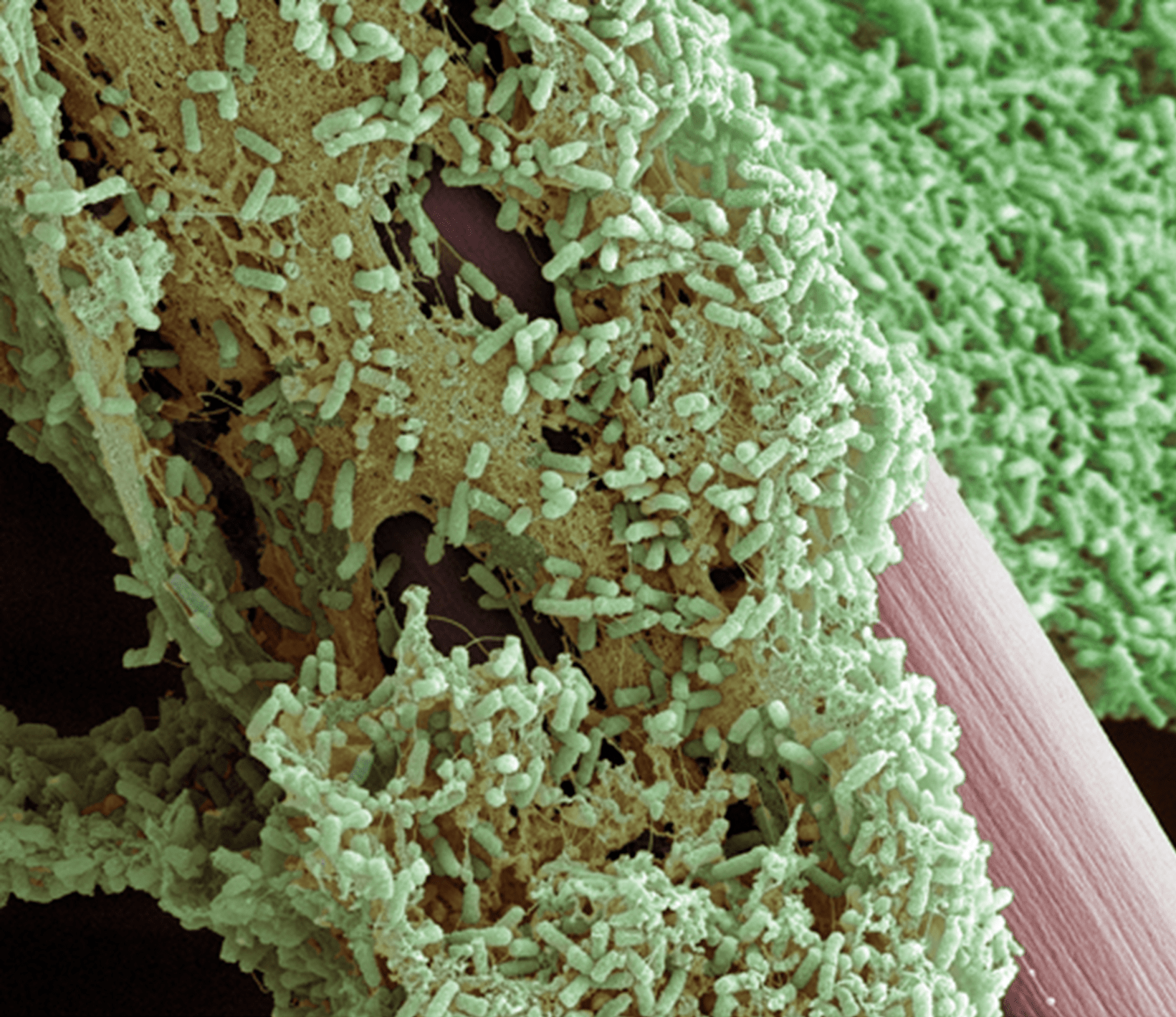AMR and Biofilm – What Does It Mean?
Antimicrobial resistance (AMR) is a global health threat referred to as the ‘silent pandemic’. The World Health Organisation (WHO) has declared that AMR is one of the top 10 global public health threats facing humanity,1 and it has been predicted that AMR will lead to over ten million deaths by 2050.2
In the persistent presence of antibiotic agents, bacteria, and other micro-organisms such as yeasts, can evolve genetically rendering them less susceptible to antibiotic treatments. This reduced susceptibility can be passed on as bacteria divide, leading to the development and transmission of antibiotic resistant populations.
AMR is the result of the inappropriate use of antibiotics in humans, animals and the environment.3 The inter-relationships between people, animals, plants, allows bacteria, including resistant bacteria, to spread.3 Over-prescribing antibiotics, excessive use of antibiotics in agriculture, poor infection control in healthcare facilities, and poor hygiene and cleaning practices all contribute to the spread of bacteria and increase in antibiotic resistance.3
While antibiotic resistance is a natural survival strategy within microbial communities, another ancient survival strategy involves bacteria existing within a self-produced polymeric matrix known as biofilm.4 Biofilms form when bacteria attach to a surface (living or non-living), multiply and secrete a matrix around themselves which protects bacteria from environmental threats such as antibiotics. Although there is widespread awareness of antibiotic resistance (i.e., bacteria becoming genetically resistant to antibiotics), there is much less awareness of antimicrobial tolerance (i.e., bacteria in biofilm physically and biologically tolerating antimicrobial agents such as antibiotics, antiseptics and disinfectants).
So, what is the relationship between biofilms and antibiotic resistance?
It is reported that 80% of the bacterial infections that we acquire are biofilm-related4 and biofilm causes persistent and recurrent infections that respond poorly to antibiotics. Despite the acknowledgement of the implications of biofilms in chronic infections, its role in antibiotic resistance has been largely overlooked. Biofilm must be considered synonymously with antibiotic resistance because of its proficiency in transferring resistance genes as well as its innate phenotypic tolerance to antibiotics.4
The natural link between AMR and biofilms creates an alarming threat and catalyst in chronic infections. There is a significant need for new antimicrobial strategies to disrupt biofilm, enhancing the action of antimicrobial agents, and reducing the opportunity for antibiotic resistance gene transfer within biofilm. Along with clinical strategies there is also a need for greater awareness and acknowledgement of the relationship between AMR and biofilms, this is crucial to slowing the progression of AMR.
How Perfectus can support you with customised biological solutions across Medtech and Biopharma industries?
Perfectus Biomed scientists are sector leaders in the customization and adaptation of in vitro and ex vivo biofilm studies. Accredited test methods include MBEC, CDC Biofilm Reactor, Drip Flow Biofilm Reactor, Single Tube Method, Ex Vivo Porcine Lung Model, and Ex Vivo Burn Wound Model. We will work with you to help you understand the benefits of different biofilm testing models and then choose a test method that is most suitable for your product. Our data is globally recognized by regulatory bodies and can be carried out to GLP as requested.

For more information about the types of biofilm testing Perfectus Biomed can offer, contact our experts at info@perfectusbiomed.com or call +44 (0) 1925 737237.
References
1. https://www.who.int/news-room/fact-sheets/detail/antimicrobial-resistance
2. Goel, N., Fatima, W., S., Kumar, S., Rajeshwari, S., Khare, K., S., Antimicrobial resistance in biofilms: Exploring marine actinobacteria as a potential source of antibiotics and biofilm inhibitors. Biotechnology Reports, Volume 30, (2021). https://www.sciencedirect.com/science/article/pii/S2215017X21000291
3. Antimicrobial resistance fighter coalition. https://arfighters.b-cdn.net/uploads/images/ARFC-What-Is-AMR-Infographic.pdf?v=1637098569.
4. Bowler, P., Murphy, C., Wolcott. R., Biofilm exacerbates antibiotic resistance: Is this a current oversight in antimicrobial stewardship?. Antimicrob Resist Infect Control9, 162 (2020). https://doi.org/10.1186/s13756-020-00830-6.
5. Olivares E., Badel-Berchoux S., Provot C., Prévost G., Bernardi T., Jehl F., Clinical Impact of Antibiotics for the Treatment of Pseudomonas aeruginosa Biofilm Infections. Frontiers in Microbiology, Volume 10, (2020). https://www.frontiersin.org/article/10.3389/fmicb.2019.02894.
6. Picture reference – This photo is by Unknown Author, is licensed under CC BY-SA-NC

